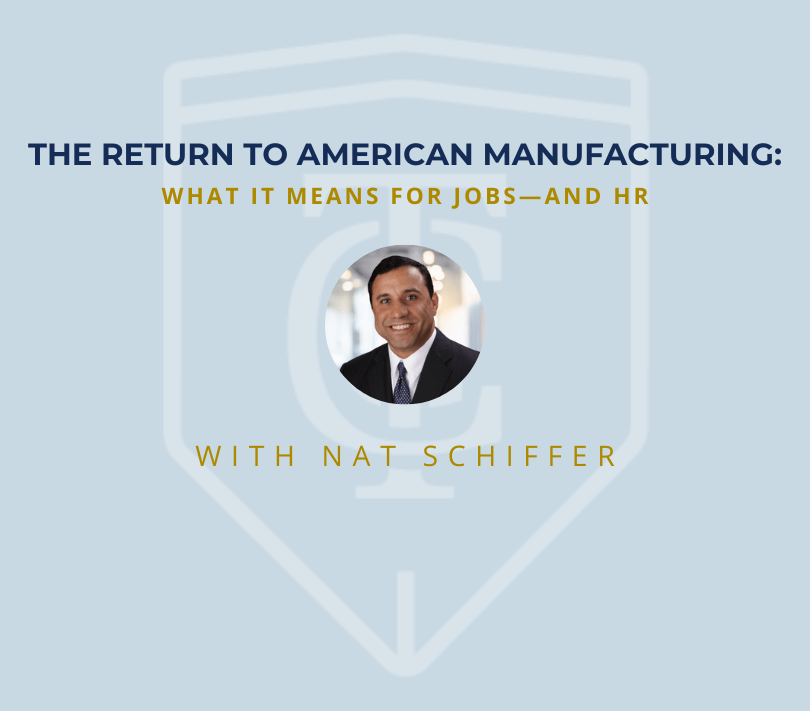
Last week, General Motors made headlines by announcing an $888 million investment into its Tonawanda, New York, propulsion plant. The funding will support production of next-generation V-8 engines, preserve nearly 900 jobs, and reinforce GM’s commitment to strengthening American manufacturing.
But this story is about far more than just one company. It signals a larger trend: the reawakening of U.S. industrial capacity—and with it, a surge in demand for skilled labor that HR professionals across the country will be called on to fill.
A Renaissance in U.S. Manufacturing
The GM investment isn’t an outlier. From semiconductors to clean energy and automotive parts, more companies are moving production back to U.S. soil. The drivers are clear:
- Supply chain resiliency
- Geopolitical risk mitigation
- Incentives like the CHIPS Act and IRA
- Customer demand for faster delivery and domestic sourcing
We’re entering a new industrial era, one powered by advanced manufacturing, AI-enabled processes, and sustainability-driven production models.
The Coming Workforce Crunch
But here’s the catch: while the investments are large, the skilled workforce pipeline is not. Electricians, machinists, engineers, line managers, EHS experts, and supply chain professionals are in increasingly short supply.
According to Deloitte, nearly 2.1 million U.S. manufacturing jobs could go unfilled by 2030. These gaps aren’t just operational—they’re strategic. That’s where HR leaders step into the spotlight.
HR’s Moment: From Support to Strategic Engine
As companies double down on U.S. production, HR will be tasked with:
- Talent pipeline development: Partnering with technical schools, veterans’ programs, and workforce boards to build skilled talent pools.
- Upskilling and reskilling: Crafting training programs for both existing and incoming employees to master advanced tools and AI-enabled platforms.
- Employer branding and EVP design: Making manufacturing careers attractive to younger generations who may not view them as aspirational—yet.
- Interim and project-based staffing: Rapidly filling leadership and operational roles with experienced professionals while permanent teams are assembled.
In short, HR will be central to realizing the promise of these investments—because bricks and machinery are only as good as the people who run them.
The Talent War Will Be Local—and Fierce
This isn’t a coastal or urban phenomenon. Many of these investments are taking place in secondary markets and rural regions, where competition for talent will be fierce. The need for creative, regional HR strategies will be paramount.
Partnerships with local economic development teams, agile hiring models, and deep labor market analysis will separate the organizations who succeed from those who fall short.
The reshoring wave is real. But if we don’t simultaneously invest in workforce readiness, it could become a missed opportunity. HR leaders have a chance to play hero here. To turn investments into livelihoods. To bridge the gap between capital and community.
If you’re an HR executive or business leader navigating this transition, let’s talk. Whether you need interim HR leadership, full-time search support, or insights into labor market dynamics, The Christopher Group is here to help.
About Nat Schiffer

Nathaniel (Nat) Schiffer has held virtually every job at The Christopher Group. Today he is TCG’s Chief Executive Officer. Nat has played a key role in the rebranding of TCG as an Agile HR & Business Solutions company that includes the launch of the firm’s Interim HR Leader and Consulting Divisions. Among his many accomplishments at TCG, he is most proud of TCG being recognized in 2019, 2020, 2021, and 2022 by Forbes as one of the nation’s top executive search firms. To learn more about Nat visit his bio page.

